Cajun and Zydeco Music: Flavors of Southwest Louisiana
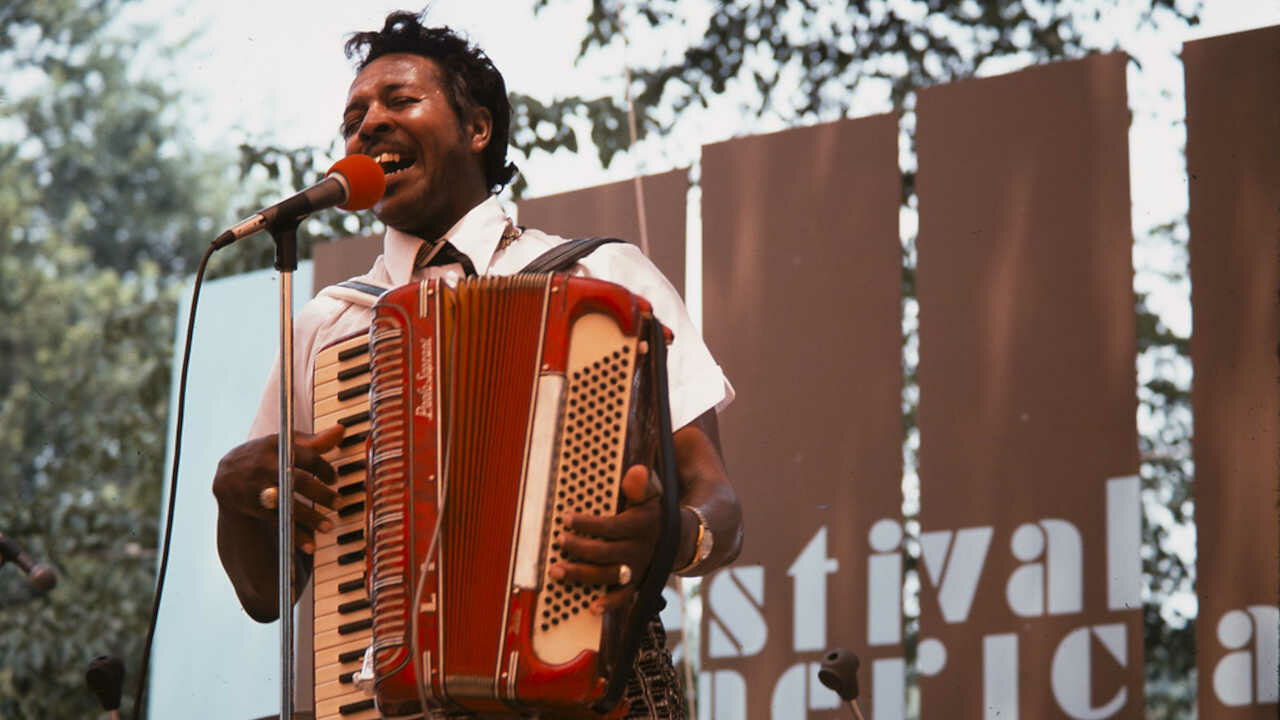
Lesson Hub 4
Race, Class, and Music

How did issues related to race, class, and cultural identity affect the development of Cajun and zydeco music?

Creole girls, Plaquemines Parish, Louisiana, photo by Ben Shahn. {{PD-USGov}} Library of Congress.

Race, Class, and Music
HISTORY & CULTURE
MUSIC LISTENING
30+ MIN
Cajun and Creole Traditional Music, cover art by Karen Celia Heil. Arhoolie Records
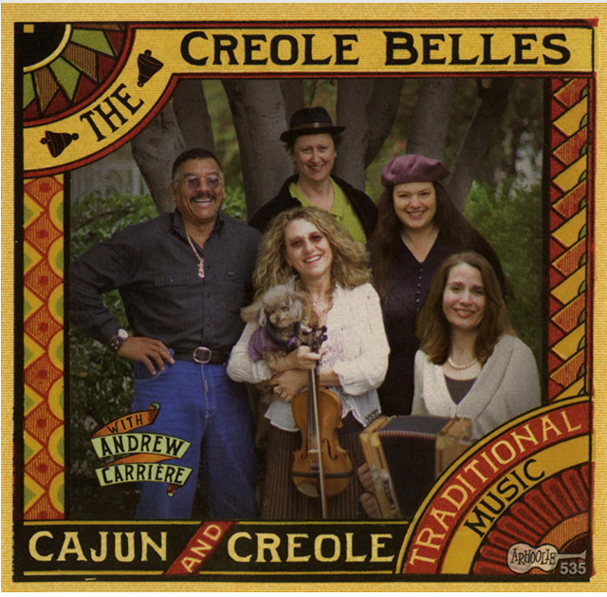
CREATIVE CONNECTIONS
Cajun and Creole
Path 1

30+ minutes
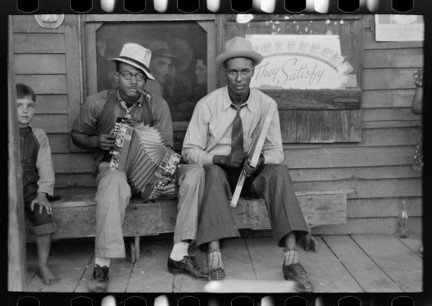
Musicians playing accordion and washboard in front of store, near New Iberia, Louisiana, photo by Russell Lee. Library of Congress.
Race and Class in Southwest Louisiana
Like Louisiana itself, both Cajun and zydeco music are embedded with a complex history of race and class relations.

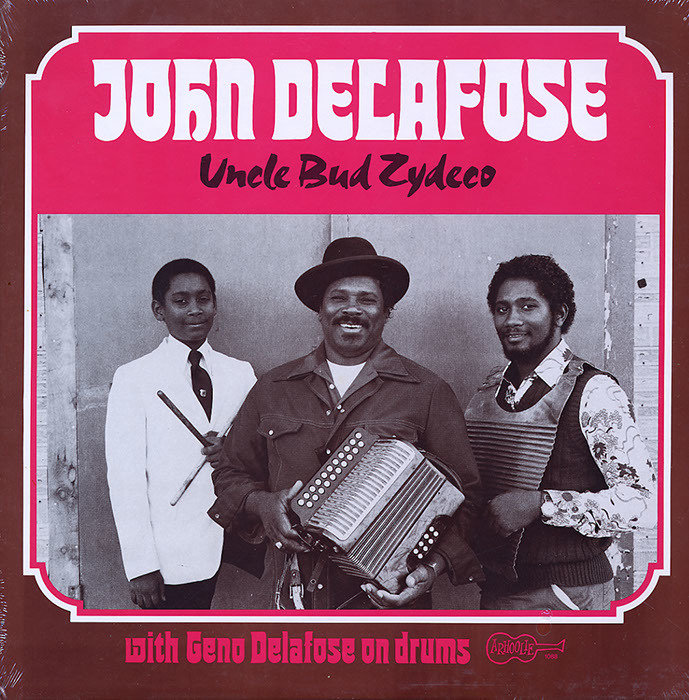
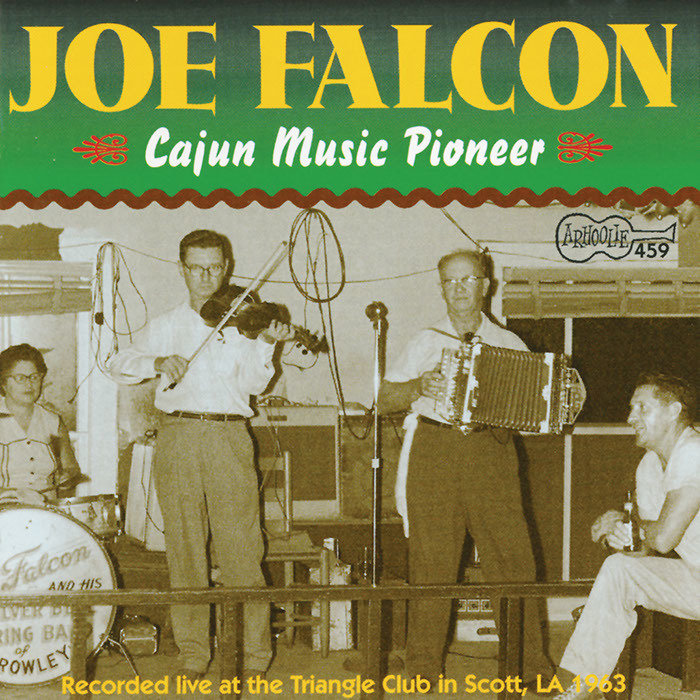
Uncle Bud Zydeco, cover art by EPop Productions. Arhoolie Records.
Cajun Music Pioneer, cover art by Wayne Pope. Arhoolie Records.
Southwest Louisiana: A Musical/Cultural Gumbo
Cajun and zydeco music can be thought of as a thick mixture of cultural and racial identities, or flavors . . .



Left: Cajun Sugarcane Farmer with Daughter, Near New Iberia, Louisiana, by Russell Lee. Library of Congress.
Above: Laborers Employed by Joseph La Blanc, by Russell Lee. Library of Congress.
It can be difficult to pinpoint the specific origins of each one, but generally, the music is made by people who identify as Cajuns and those who identify as Creoles.
Cajuns are descendants of people who once lived in Acadia (parts of what are now New Brunswick, Prince Edward Island, and Nova Scotia in Canada), but were forced to migrate south, and settled in Louisiana.
Generally Speaking .....
Who Are the Cajuns?
Acadia Map 1754, by Klaus Meuller (Mikmaq). CC BY-SA 3.0, via Wikimedia Commons.


Who Are the Creoles?
- Creole heritage, which is commonly associated with zydeco music, is much more complicated to trace.
- Creoles vary widely in terms of ethnic background.
- The term Creole usually refers to some sort of combination of Caribbean, West African, Native American, Spanish, French, and Portuguese heritage.
- However, people of any race or ethnicity can (and do) identify as “Creole.”

Text
Listen to a short excerpt from this recording:
When listening to this recording, how do you think the musicians might identify (i.e. as Cajun or Creole)? Why?
Attentive Listening: Cajun or Creole?

Cajun Musicians
The instrumentation (use of the fiddle and triangle) and vocal timbre (use of the “Cajun yell”) are representative of the traditional "Cajun sound."

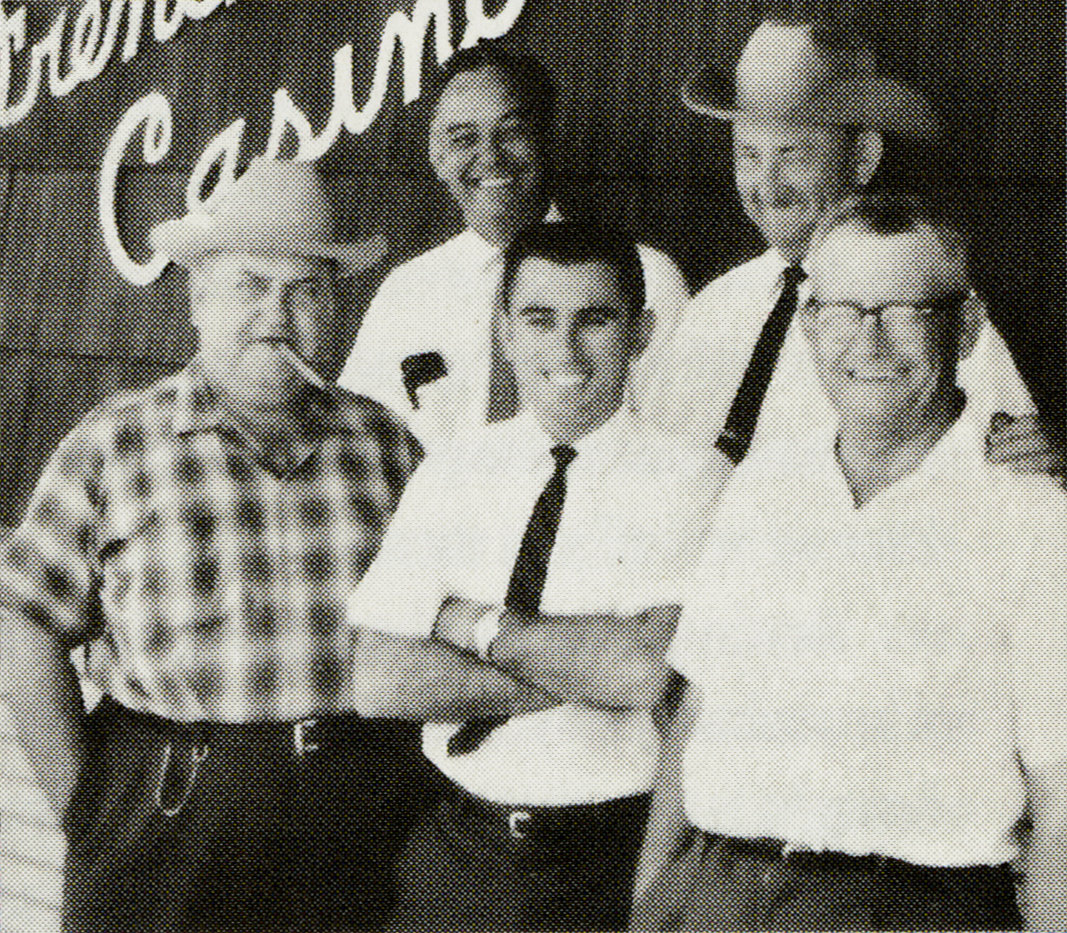
Cyp and Adam Landreneau with Band, photo by Chris Strachwitz. Arhoolie Records.
The song you just heard is called “La Valse de Denus McGee.”
Recorded by Cajun musicians Cyp and Adam Landreneau in 1966, this song is a tribute to a Cajun legend: Dennis McGee (McGee originally recorded it under the title "Ma chère bébé creole").
Cajun Ancestory
However, after arrival in Louisiana, the Acadians had cultural contact with many African Americans, Spanish, Germans, Native American groups, and many other immigrant groups over the years that led to assimilation and the emergence of a unique Cajun identity.
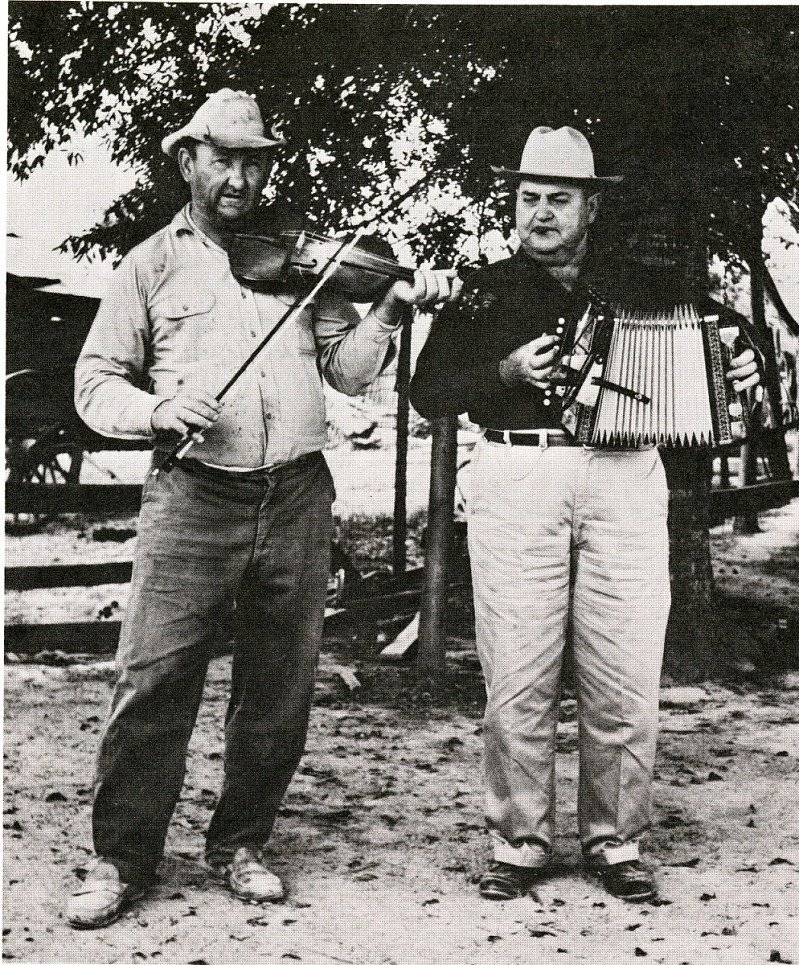

Cajun Musicians at the First Folklife Festival, unknown photographer, Smithsonian Institutional Archives.
The origins of Cajun ancestry and ethnic identity are relatively straightforward:
Cajuns are the direct descendants of the Acadians, who were exiled from present-day Nova Scotia by the British in 1755.
Displacement and Rejection
When the Acadians began arriving in Louisiana in the late 1700s, they were not welcomed with open arms by the aristocratic society in New Orleans.


Large Cajun family on farm south of Crowley, Louisiana, photo by Russell Lee. Library of Congress.
The insular, family-based social structure they brought with them from living in rural Maritime Canada was considered isolated and strange.
Although white, catholic, and French-speaking, they were considered foreigners.
The Cajuns Settle in the “Bayous”
However, the Acadians were used to these kinds of extreme conditions, and put their great industriousness, frugality, and pragmatism to use in getting established in less-than-ideal circumstances.


Fisherman's home along the bayou, Akers, Louisiana, photo by Russell Lee. Library of Congress.
Bayous(river-like terrain), wetlands (swamps), and flat prairies along the Mississippi River and west of the Atachafalaya River.
These were harsh environments.
The Cajuns and Poverty
Their rural existence and rejection from society created a permanent link between the Acadians (or "Cajuns" as they came to be known by the 1860s) and poverty.


Detail of construction of hundred-year-old house in which aged Cajun couple are living, near Crowley, Louisiana, photo by Russell Lee. Library of Congress.
Throughout the early 1900s, the stereotype of the Cajuns as poor, uneducated, backwards "rednecks" or "swamp rats" who "couldn't even speak English" continued to be perpetuated.
In pop culture, they were often depicted as violent, toothless, alcoholic types.
Generally Speaking .....
Cajun Stereotypes


Cajun Home Music, cover art by Ronald Clyne. Folkways Records.
Cajun Oppression
After 1921, Cajun and Creole children were prohibited from speaking French in school, even if they had not yet learned English.
Children who spoke French in school were punished.
As a result, parents of the following generation often discouraged their children from speaking French. That's why far fewer people in Louisiana speak French today than they did in decades past.

Text
Listen to a short excerpt from each recording...
When listening to these recordings, how do you think the musicians might identify (i.e. Cajun or Creole)? Why?
Attentive Listening: Cajun or Creole?

Example 1
Example 2
All of the musicians featured on the previous slide self-identified as Creole on their album.
Generally Speaking .....
What is Creole?


Cajun and Creole Traditional Music, cover art by Celia Karen Heil. Arhoolie Records.

Les Amis Creole, cover art by Morgan Dodge. Arhoolie Records.
Example 1
Example 2
Unlike the Cajuns, whose ancestry and ethnic identity is clear, the definition of "Creole" is somewhat more complex and less strictly defined.
Generally Speaking .....
What is Creole?


Louisiana Creole Flag, by Elevatorrailfan, CC BY-SA 4.0, via Wikimedia Commons.
Creole as "Local" Origin
Technically, the term Creole is not a racial label . . . Although it is often used in this way.
In a very general sense, this label was meant to distinguish between those who were born in Louisiana and those who were born in Europe.

White Creoles
At first, the term “Creole” was sometimes used to distinguish between “native-born” people of European descent (white) and European (white) settlers who were born elsewhere.
In the early 1800s (after the Louisiana Purchase and before the Civil War), some white Creoles were considered a part of the aristocracy of Louisiana, holding great political and economic strength in the community.

From this perspective, Creoles were the descendants of African slaves, French and Spanish colonists, free people of color, and Native Americans (all of whom were mixing and producing offspring).
Generally Speaking .....
Creole as “Mixed Race”


Over time, the practical meaning of this term was expanded to include people of mixed European or African descent who were born in Louisiana.
Racism in the South
The American "black and white" worldview transformed Louisiana culture during the 1800s.
The rampant racism in the American South both before and after the Civil War (and the end of slavery) put African Americans and mixed-race Creoles at the very bottom of society.


Contemporary Creole Identity
Although lots of different types of Louisiana natives have historically identified as Creole, this word currently carries a strong connotation of anything with African, French, Spanish, Portuguese, and Native American roots.
The most important thing to remember is that people of many different races or ethnicities can (and have) identified as Creoles.
Cultural identity is informed by personal choices...

The struggles of poverty and the search for work drove many mixed-race Creoles out of New Orleans and into the rural parts of Louisiana, where they found themselves with some new neighbors . . .
Generally Speaking .....
Heading West...


Family Moving, Opelousas, Louisiana, photo by Russell Lee.Library of Congress.
Cajuns were also at the very bottom of the social ladder, considered only a small step above the Creoles and African Americans in the area.
Rendezvous in the Fields


Picking Berries in Field Near Hammond, Louisiana, by Russell Lee. Library of Congress.
At this time, most Cajuns could only make a living by sharecropping or tenant farming—jobs where they worked alongside free people of color, and after the Civil War, with the thousands of emancipated African American slaves.
Cajun and Creole Cultural Exchange
It was in these fields in rural Southwest Louisiana where the cultural exchange between Cajuns and Creoles began to flourish.
Working and living alongside one another, they shared stories, music, food, dance, and began to influence one another's cultures heavily.

Although Cajuns and Creoles were often divided along racial lines, they were equal in class, and have lived together as neighbors now for hundreds of years.
It's out of this exchange that modern Cajun and zydeco musics were born and continue to thrive.
Generally Speaking .....
Music and Cultural Exchange


Nowadays, the terms "Cajun" and "Creole" are often used interchangeably to describe anything that has Louisiana roots or flair.
It is true that Cajun musicians are predominantly white and zydeco musicians predominantly black, but the exchange and influence between the two is what gives these music traditions their special flavor.
Cajun and Creole Influences in Modern Music


Allons a Lafayette & More, cover art by Elizabeth Weil. Arhoolie Records.
Over the past 50 years, music has helped to create a surge in cultural pride for Cajuns and Creoles alike.
Cajuns and Creoles share a common interest in preserving the French language in the state, and their food and and music is now known and respected world-wide and regarded by many as a cultural treasure.
Generally Speaking .....
Cajun and Creole Cultural Pride

Learning Checkpoint
- Who were (are) the Cajuns?
- Who were (are) the Creoles?
- What aspects of cultural identity do Cajuns and Creoles share?

End of Path 1: Where will you go next?


A Creole and Cajun Partnership: Ardoin & McGee
Path 2

30+ minutes


Amédé Ardoin and Dennis McGee, photo courtesy of Carol Frey. Pinterest.
Attentive Listening: Instruments

Listen to a short excerpt from each recording:
What instruments do you hear?
"Madame Atchen"
"Blues de Basile"
Attentive Listening: Comparing Style

Listen again...(perhaps several more times)!
"Blues de Basile"
"Madame Atchen"
What are your first impressions of each recording?
Are these tracks played by different musicians, or the same?
Are they from the same time period?
The Founding Fathers of Cajun and Zydeco


These tracks were recorded by the same musicians--Amédé Ardoin and Dennis McGee--in 1929 and 1930.
Their musical collaboration laid the basis for the genres we now call Cajun and zydeco.
Ardoin and McGee's partnership is an example of the profound influence white Cajuns and black Creoles living in southwestern Louisiana had on each other in the early 20th Century.
Dennis McGee

Dennis McGee (1893–1989) was born in Eunice, Louisiana, of Irish, Acadian, and Seminole Native American ancestry.
His first language was French, and he began playing the fiddle at the age of 14. Before he owned a fiddle of his own, he taught himself tunes on a cigar box with strings by listening and watching the elders in his community.
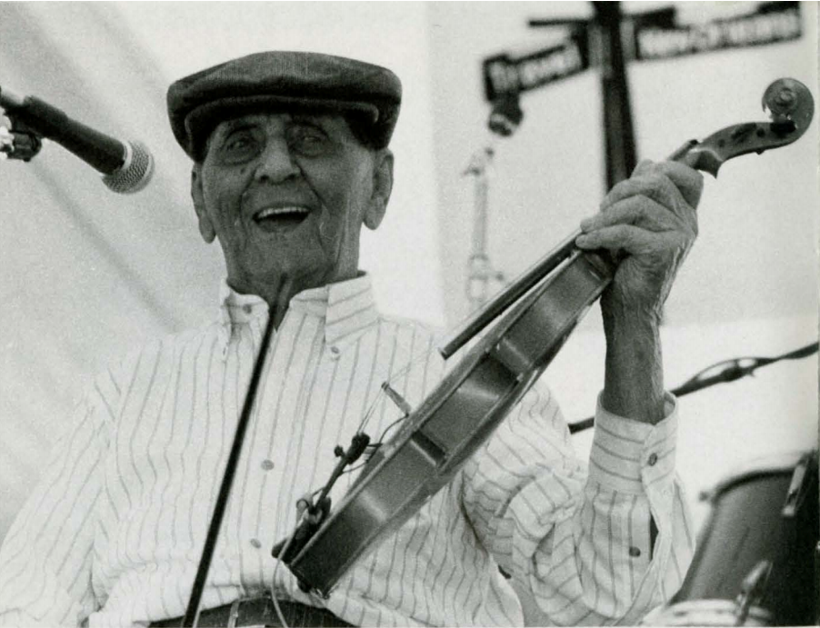
Dennis McGee, photo by Chris Strachwitz. Arhoolie Records.
About Dennis

Dennis McGee, who was raised in a poor farming family, met Amédé Ardoin while sharecropping on the same farm in rural Louisiana.
He is widely credited as being one of the originators of the distinct Cajun style of fiddle-playing and singing.
McGee’s repertoire included many of the old Acadian fiddle tunes, mazurkas, and reels that came to Louisiana with the first settlers.
As Cajun music became more popular and more widely recorded throughout the 20th century, Dennis McGee was regarded as a living link to the music's origins.

Amédé Ardoin

It's estimated he was born around 1896 and died in 1941.
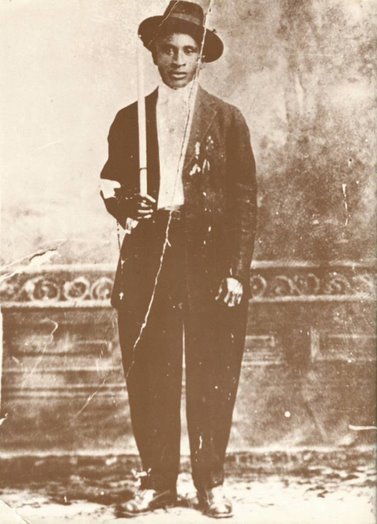
Amédé Ardoin, by unknown photographer, photo courtesy of Christopher King.
Amédé Ardoin is a somewhat more elusive character in the history of Cajun and zydeco music.
Very little is known about his life or history, except what was heard in stories told by elders who knew him (like Dennis McGee) and what can be heard in the 34 songs he recorded during his lifetime.
About Amédé

Along with his vast vocal range and power, Ardoin's unique style is now his legacy.
Amédé Ardoin Statue, by Whiting Russel. Photo courtesy of the St. Landry Parish.

Amédé spoke French Creole and was a well-respected accordion player--playing at all the most popular house dances (black and white) in the area.
He is said to be one of the first accordion players to incorporate the syncopated rhythms and blues elements now synonymous with zydeco music into his playing.
Clifton Chenier, who is now known as the the "king of zydeco," credits him as his first and greatest influence.
About Amédé

Stories about him say that Amédé Ardoin would carry his accordion around in a flour sack as he walked to and from work in the fields or house dances, and that he always carried a lemon in his pocket to help sweeten his voice.
I'm Never Comin' Back, cover art by Ann Savoy. Arhoolie Records.

Legend has it...

"One night he [Amédé] was playing a dance and one of the daughters of the man on whose farm he lived lent him a handkerchief to wipe his face. There were some people at the dance who saw this and didn't like to see a black man use a white woman's handkerchief; so they followed him home and beat him badly. He slowly began to lose his mind and died unknown in the Pineville Institution for the Insane. Everyone knew and liked him. There are always no-good people – a person has to be careful . . ."
- Story as told by neighbor Joel Savoy in Ann Savoy's book, Cajun Music:
A Reflection of the People
McGee and Ardoin: Two Sides of the Same Coin

Dennis McGee and Amédé Ardoin shared the same socio-economic status, lived in the same place, and created music together.
However, the tragic story of Ardoin’s death also highlights the clear racism that existed during this time.
Their partnership was an example of the cultural and musical exchange that has always been present in Louisiana and remains so today.
Their music laid the groundwork for modern Cajun music as we know it today and helped inspire an entirely new genre of music--zydeco.
Attentive Listening: Listening for Collaboration

Listen attentively to “Madame Atchen” and “Blues de Basile” again.
- This time, follow along with the lyrics and translations.
- As you listen, write down observations about these recordings on your compare and contrast sheet.
"Blues de Basile"
"Madame Atchen"
Comparing and Contrasting

Conversation Starters:
-
Which elements are the same in each?
-
What are the main differences between the two songs?
-
What influences can you hear in each (elements of the blues? European fiddle tunes? etc…)
Bonus Discussion Question:
- Looking at the elements in your listening log, how, if at all, do these songs reflect any issues regarding race and class that we've discussed?
Learning Checkpoint

- What positive outcomes emerged from Amédé Ardoin and Dennis McGee’s partnership?
End of Path 2: Where will you go next?


Music and Cultural Identity
Path 3

30+ minutes


Clifton Chenier Sings the Blues, cover art by Wayne Pope. Arhoolie Records.
Attentive Listening
Follow along with the lyrics as you listen to “Paper in My Shoe” (recorded by Clifton Chenier).
Think about these guiding questions:
- What do you think the expression "Paper in my Shoe" means?
- What do the lyrics mean to you?
- Does this song represent any shared aspects of Cajun and Creole culture?


"Paper In My Shoe"

The singer doesn't want his girlfriend's parents to find out that he is so poor.
Note that, although these lyrics reflect the realities of being from the lower class, the musical sounds are upbeat, happy, and danceable.

Within this song, the term "paper in my shoe" is meant to suggest that the singer is so poor that he has holes in his shoe and must put a piece of paper where the sole should be to keep his feet from hitting the ground.
Optional Extension Activity
Listen again . . .
This time, sing along with the song and/or tap along with the rhythm (note the use of English and a modern blues feel!)


This recording was made by Clifton Chenier in the 1970s.
Chenier is often called the "king of zydeco"
However, the song "Paper in My Shoe" has much older roots and has been recorded by both Cajun and Creole musicians.
The "King of Zydeco"



Attentive Listening: Compare and Contrast

Listen to excerpts from a Cajun and an early Creole version of "Paper in my Shoe":
What is similar?
What is different?
Cajun version: “Paper in my Shoes,” performed by Nathan Abshire and the Balfa Brothers

Early Creole version: “Du papier dans mon soulier,” performed by Etienne Lewis
Music as a Reflection of Cultural Identity

Many songs in the Cajun and zydeco tradition (such as “Paper in My Shoe”) have lyrics that reflect sad themes like suffering and hardship.
Yet, these sad lyrics are often set to upbeat melodies.
This common musical trend reflects one important facet of Cajun and Creole cultural identity:
Strength in adversity, or "resilience"

Cajun/Creole Cultural Values

Other cultural values that commonly appear in Cajun and zydeco songs include:
-
Family and Community
-
Courage
-
Integrity
-
Commitment
-
"Joie de Vivre" (Joy of living)
-
"Laissez les bon temps rouler" (let the good times roll)
-
Humor
-
Ethnic Pride

Music and Cultural Identity

The song "Paper in my Shoe" reflects both:
A socioeconomic aspect of Cajun/Creole identity (class) and...
A value/belief-based aspect (resilience)

Cultural Identity Is Complex

Everyone has multiple facets of cultural identity based on things like:
- Race or ethnicity
- Class or socioeconomic status
- Geography, nationality, language
- Religion, beliefs, values
- Gender, age (generation)
- Profession, neighborhood
- Interests, hobbies, sports, etc…

Activity (Part A): My Multicultural Self
- Place your name in the center and use the outside “bubbles” to name aspects that are important in defining who you are.
-
Focus on one of your "identity bubbles."
-
Think about the following question:
Can you think of a song that reflects this part of your cultural identity?


Activity (Part B): Music and Cultural Identity
- Write out the lyrics to the song you chose in Part A.
-
Underline one or more places in the lyrics that represent your identity.
-
Write 2–3 sentences that describe how this song represents your cultural identity.


Learning Checkpoint
-
Can you name a facet of Cajun and Creole cultural identity that is sometimes reflected through music?
-
Can you express your cultural identity through music? In what ways?


End of Path 3 and Lesson Hub 4: Where will you go next?




Lesson Hub 4 Media Credits

Audio courtesy of
Smithsonian Folkways Recordings
Images courtesy of
The Arhoolie Foundation
Library of Congress
Smithsonian Institution Archives
Smithsonian Folkways Recordings
St. Landry Tourist Commission

© 2022 Smithsonian Institution. Personal, educational, and non-commercial uses allowed; commercial rights reserved. See Smithsonian terms of use for more information.
This Lesson was funded in part by the Grammy Museum Grant and the Smithsonian Youth Access Grants Program, with support from the Society for Ethnomusicology and the National Association for Music Education.
For full bibliography and media credits, see Lesson 4 landing page.

